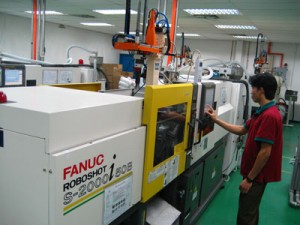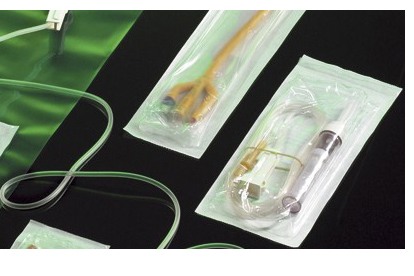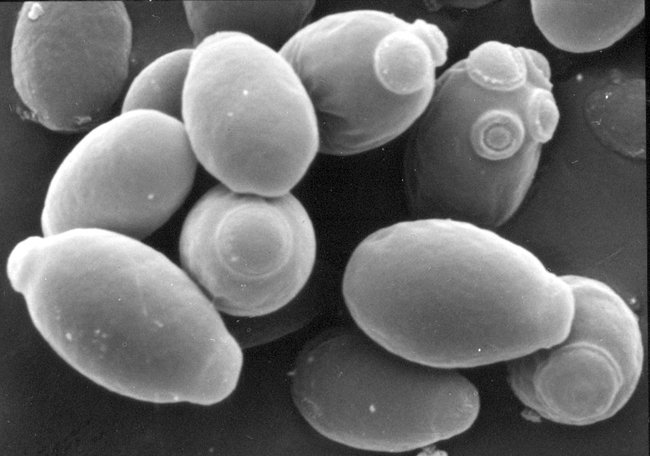
Blister Packaging
The following article is one that I’ve recently written for the Packaging Professional magazine, which details a fascinating 25 year transformation in the way we work and do business in the pharmaceutical packaging industry. Over that period the industry itself has undergone huge change and with recent economic pressures and the rise of generic competition is likely to continue unabated.
Back in the 1980’s, before the days of email and the internet, working in packaging could sometimes be a lonely business, especially in an area like pharmaceuticals where regulatory requirements, standards and process were constantly being updated as authorities, such as the US Food and Drug Administration (FDA) and the UK Medicines Control Agency (MCA), evolved  increasing powers and rules. A situation where ‘fit for purpose’ packaging could be a matter of life and death.
Pharma companies are strictly regulated and need to work to tight and common standards and most companies were running similar, machinery, quality systems and packaging materials. So learnings from one company could greatly help another and save having to ‘reinvent the wheel’. It was also important for the industry to provide a collective view to positively influence proposed legislation and regulations, with a common and pragmatic ‘voice’.
So back in 1984, the ‘seed’ of an idea for a group was ‘sown’ by Alan Haskins of Roussel Laboratories and Roy Gray of ICI Pharmaceuticals, after Roy’s boss had visited the USA and seen a successful American group working in the same sector. This was a defining moment and the group would not have happened without their collective vision and proactive approach. The first Pharmaceutical Common Interest Group (PCIG) meeting took place on 16th October 1984 at Sysonby Lodge, which was the head office of The Institute of Packaging (IOP) at the time). The meeting was chaired by Alan Haskins, with Roy Gray as Secretary and an attendance of 18 people from 15 pharmaceutical companies from across the industry. There were 37 questions raised & discussed at that meeting on a range of topics, including: a New British Standard for aluminium flexible tubes, label adhesives, Tamper Evidence and EAN bar codes – themes that would arise again and again over the years.
It was agreed that there would be three meetings per year and venues would rotate across the various company sites, but over the years most were actually hosted by the IOP.
One of the original members, Mike Shorten, who worked for Boots Pharmaceuticals at the time and is now retired, recalls:
“The PCIG soon became my most important network. Forty pharmaceutical practitioners across all sectors of the industry provided a powerful resource that could offer practical experience about most issues and without any consultants’ fees! A great strength of the group was the willingness of its members to talk openly about issues and share best practice and then to collectively influence new regulations and standardsâ€
How the CIG has changed over the years
I have myself have been a member of the group for over 18 years (since 1991) and over that time can recall a great deal of camaraderie, focused help for each other and pragmatism having helped us all deal with issues as diverse as use of high barrier blister materials, bar coding issues and leeching of preservative through polyethylene bottles.
As issues became apparent, some common themes evolved and a number of dedicated ‘sub groups’ were set up to focus on specific topics. Four of these were Working Groups for Digital Artwork & Reprographics (DAR), Validation, Child Resistance and Quality Standards. The DAR subgroup was set up at a time when ‘desktop publishing’ was a buzz word being used as artwork generation moved from ‘old fashioned’ layout board, to a digitised computerised system.  At the time there was no common standard. There was a range of hardware (PC & Mac based), a number of operating systems, and various artwork creative software packages on each platform. The ease by which artwork could be generated and manipulated raised its own issues in terms of artwork version control and (in the early days) data going ‘missing’ sometimes between approval and print – which had the potential to cause a catastrophic result. So the group played a critical role in sharing ‘best practice’ and setting appropriate standards.
The Validation subgroup was formed in 1992, the founding Chairman being Mike Harwood of The Wellcome Foundation, Dartford. A subsequent Chairman (1993-98) John Cooper (of Pfizer at the time) recalls “The original intent was to develop a set of guidelines for validating pharmaceutical packaging equipment and then issue to IOP members, but as the guideline developed and the information was shared informally with machine manufacturers it became obvious that it would be of a wider benefit to publish a ‘book’. As I was a member both of the PCIG and Institute of Quality Assurance Pharma Quality Group (IQA PQG), I suggested that this was published jointly as a monograph in the series which was already established by the PQG. The monograph was published in 1998 and launched at a joint meeting of PCIG and PQG at the Royal Pharmaceutical Society in Lambeth with over 200 people in attendance, including the MCA Head of Inspection and Enforcement, Gordon Munro!†That was another defining moment in the ‘life’ of the PCIG and evidence of the esteem with which the group was held within the pharmaceutical industry. The third edition of that monograph is presently due for print.
It was not uncommon in the early days for PCIG meeting attendance to be around 35-40 people, with standing room only. Questions would be collated by the Secretary and shared at each meeting. It would sometimes take 3 or 4 hours to go through them all, one-by-one. As the years have gone by and we have moved in to a digital age, email has enabled members to converse more easily and questions can be asked and answered sometimes within minutes. So the focus and frequency of face-to-face meetings changed to providing more of an opportunity for discussing in more depth, processes, procedures, technology and impending legislation, and to keep in touch with old colleagues and friends. Together with the myriad of mergers among the pharma companies, this has meant attendances have dropped.
Where we are going with it in future
The PCIG (now called the Pharmaceutical Packaging Forum – PPF) is still active, with a core of ‘stalwart’ members and a new voluntary Secretary, David Pethick, former Director of Packaging Development at GSK. David is upbeat about future for the group and says “the pharma landscape, increasing demands and changing regulations on packaging present as much, if not more of, a challenge as when the PCIG was first established. I see both a need and role for a vibrant PCIG to help the pharma packaging professional meet those challenges, whether that be from simply providing networking among its members, to wider influencing, technical leadership, training needs or whateverâ€.
Pharma packaging legislation/regulation has changed enormously, and the Society recently received an enquiry about training courses on this. Feedback from PCIG members showed a high level of similar interest. Whether or not such a course could be developed is still a work in progress, but both David (for PPF) and Ian Morris, Training Manager at IOM3, would be interested in readers’ feedback.
Ultimately, the future and utility of PCIG, as over its past history, is reliant on the members who actively value and contribute to it.
Chris Penfold
If you work in Pharma and are interested in knowing more or in joining the PPF group, you can contact David Pethick (the Secretary) at dppk@btinternet .
On my own part (Chris), as well as continuing to be an active member of the PPF and a consultant, I am also the External Relations Officer of the East Midlands Packaging Society, for which you can find more information at: East Midlands Packaging Society.
You can find more help and advice on various aspects of pharmaceutical packaging at our sister site: The Pharma Gateway
 Another exciting one day intensive hands-on training course being run by Design Cognition in October.
Another exciting one day intensive hands-on training course being run by Design Cognition in October.


 Penny Markt are justifying their move back into cans with claims that new can designs now mean that 30% less material is used, that the recycling rate for aluminium cans in Germany have risen significantly and that they can also achieve savings as the cans stack better than the PET bottles they are replacing and also chill much faster – therefore saving energy and money.
Penny Markt are justifying their move back into cans with claims that new can designs now mean that 30% less material is used, that the recycling rate for aluminium cans in Germany have risen significantly and that they can also achieve savings as the cans stack better than the PET bottles they are replacing and also chill much faster – therefore saving energy and money.




